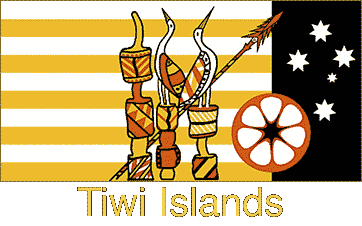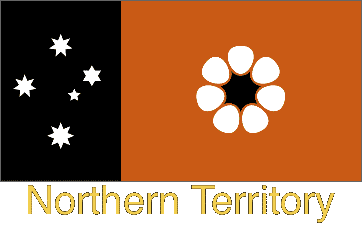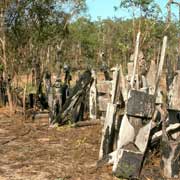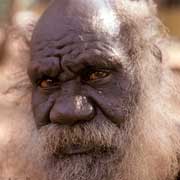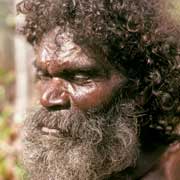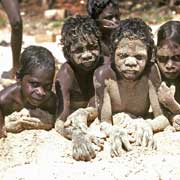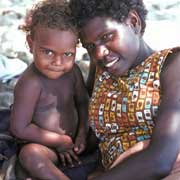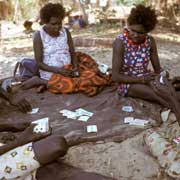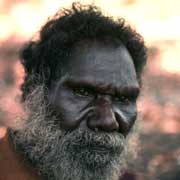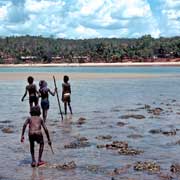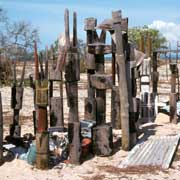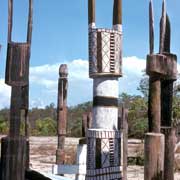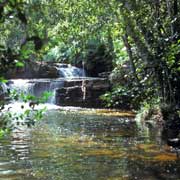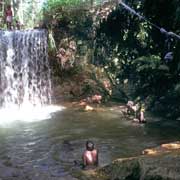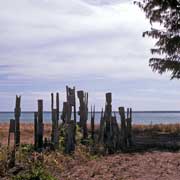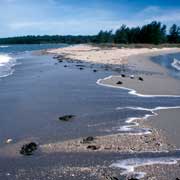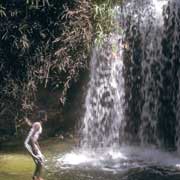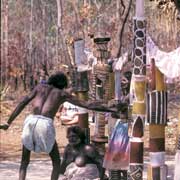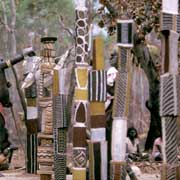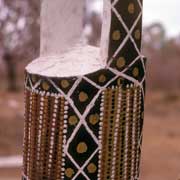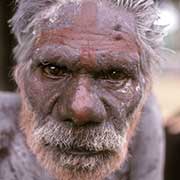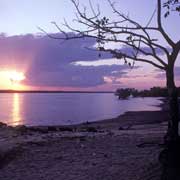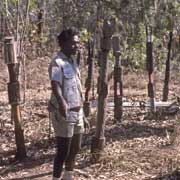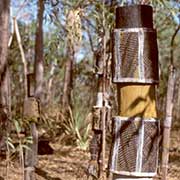Photos of the Tiwi Islands - Melville Island, Australia
The Tiwi Islands - Melville Island
The larger of the Tiwi Islands, 6,220 km², Melville Island lies east of Bathurst Island across the Apsley Strait. The island had been sighted by the Dutch navigator, Abel Tasman, who mapped its coastline in 1644. In late April 1705, three ships of the Dutch East Indian Company anchored at the beach of Karslake, near what is now the community of Milikapiti. The island was also regularly visited by Malay or Macassans who would periodically come to collect “trepang” or “beche-de-mer”, a sea slug much prized as food (an as an aphrodisiac) by the Chinese. They would come ashore at Port Cockburn, near Garden Point at the northern end of Apsley Strait, that divides Melville from Bathurst Island. The Tiwi still call this spot Pularumpi (or Pirlangimpi), meaning “tamarind trees”, grown from the seeds the Macassans would bring with them for food.
you may then send it as a postcard if you wish.
Paruwu is at the other end of Apsley Strait, opposite Nguiu and is now a small camp with an impressive collection of Pukumani burial poles. It was initially the home of the Mundebulla tribe, but early 20th century, a white buffalo shooter, Joe Cooper, camped here. A road leads from here to the large community of Milikapiti, formerly known as Snake Bay, founded in 1941. It has a beautiful location on the east coast, with Karslake Point nearby. There are Pukumani poles here, placed around a grave; a film was made of the ceremony in the eighties. Near Milikapiti are the ruins of the first settlement on the island: Fort Dundas, founded in 1824 but abandoned five years later because of the hostility of the Tiwis.
Inland is Pickertaramoor, the centre of a forestry project. There is a lovely waterfall here, but a better for swimming is Taracumbie Falls, with an excellent pool. On day trips from Darwin, tourists may be taken there after visiting Nguiu (now Wurrumiyanga) on Bathurst Island and the Pukumani burial site at Paruwu. These Pukumani poles, unique to the Tiwi, are like totem poles, carved and painted in many colours, each with different meanings according to each clan who has commissioned them. These poles are placed around the grave, to commemorate the deceased and prevent his spirit from entering the camp again.
